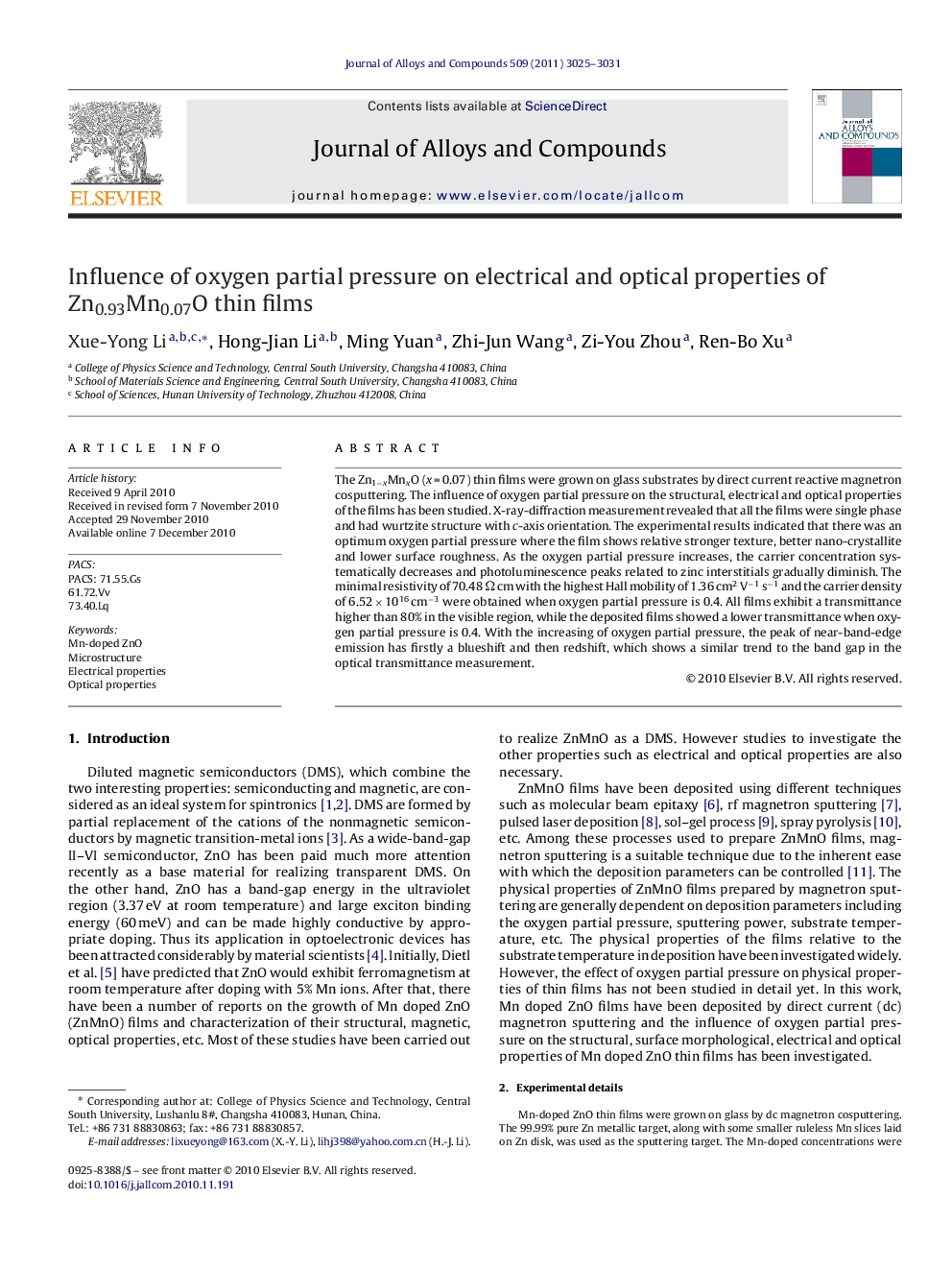| کد مقاله | کد نشریه | سال انتشار | مقاله انگلیسی | نسخه تمام متن |
|---|---|---|---|---|
| 1617671 | 1005691 | 2011 | 7 صفحه PDF | دانلود رایگان |

The Zn1−xMnxO (x = 0.07) thin films were grown on glass substrates by direct current reactive magnetron cosputtering. The influence of oxygen partial pressure on the structural, electrical and optical properties of the films has been studied. X-ray-diffraction measurement revealed that all the films were single phase and had wurtzite structure with c-axis orientation. The experimental results indicated that there was an optimum oxygen partial pressure where the film shows relative stronger texture, better nano-crystallite and lower surface roughness. As the oxygen partial pressure increases, the carrier concentration systematically decreases and photoluminescence peaks related to zinc interstitials gradually diminish. The minimal resistivity of 70.48 Ω cm with the highest Hall mobility of 1.36 cm2 V−1 s−1 and the carrier density of 6.52 × 1016 cm−3 were obtained when oxygen partial pressure is 0.4. All films exhibit a transmittance higher than 80% in the visible region, while the deposited films showed a lower transmittance when oxygen partial pressure is 0.4. With the increasing of oxygen partial pressure, the peak of near-band-edge emission has firstly a blueshift and then redshift, which shows a similar trend to the band gap in the optical transmittance measurement.
Research highlights▶ The experimental results indicated that there was an optimum oxygen partial pressure of R is 0.4 where the film shows relative stronger texture, better nano-crystallite and lower surface roughness. ▶ As R is in the region of 0.3∼0.4, resistivity decreases with oxygen partial pressure increasing. ▶ All films exhibit a transmittance higher than 80% in the visible region, while the deposited films showed a lower transmittance when oxygen partial pressure is 0.4. ▶ There is a largest band gap energy of Zn0.93Mn0.07O films deposited at R is 0.4 in spite of the lower carrier concentration, which can be ascribed to the weaker many-body effects. ▶ The strong dependence of electrical and optical properties on oxygen partial pressure implies that oxygen vacancies play a more important role in the conductivity of the films.
Journal: Journal of Alloys and Compounds - Volume 509, Issue 6, 10 February 2011, Pages 3025–3031